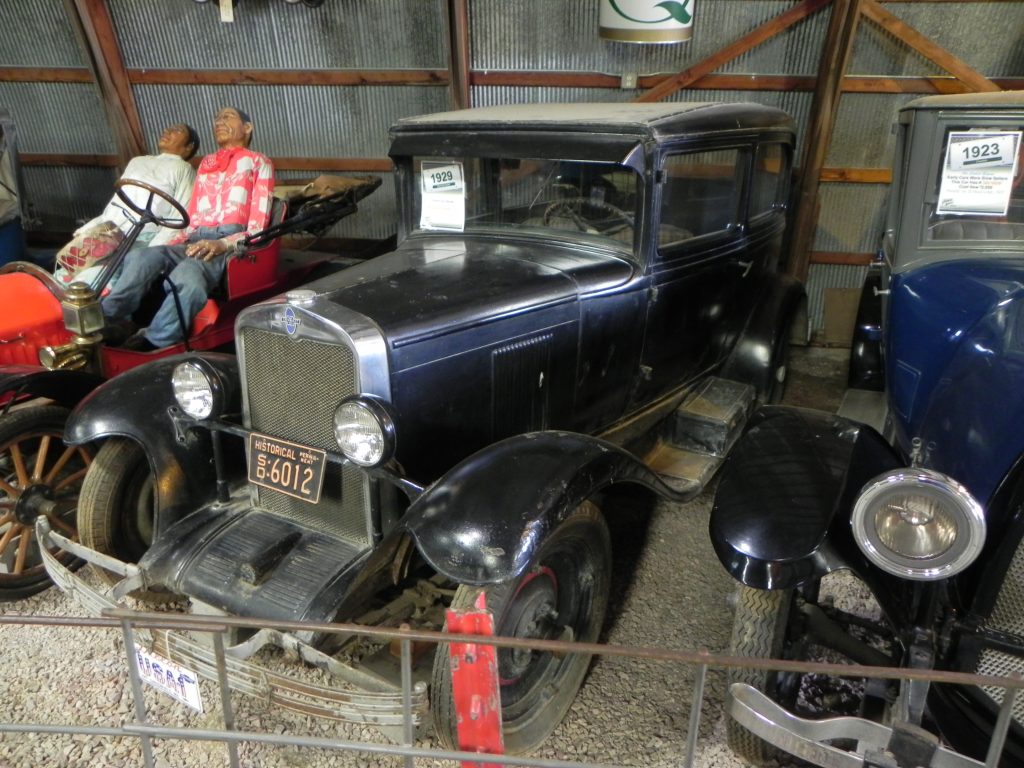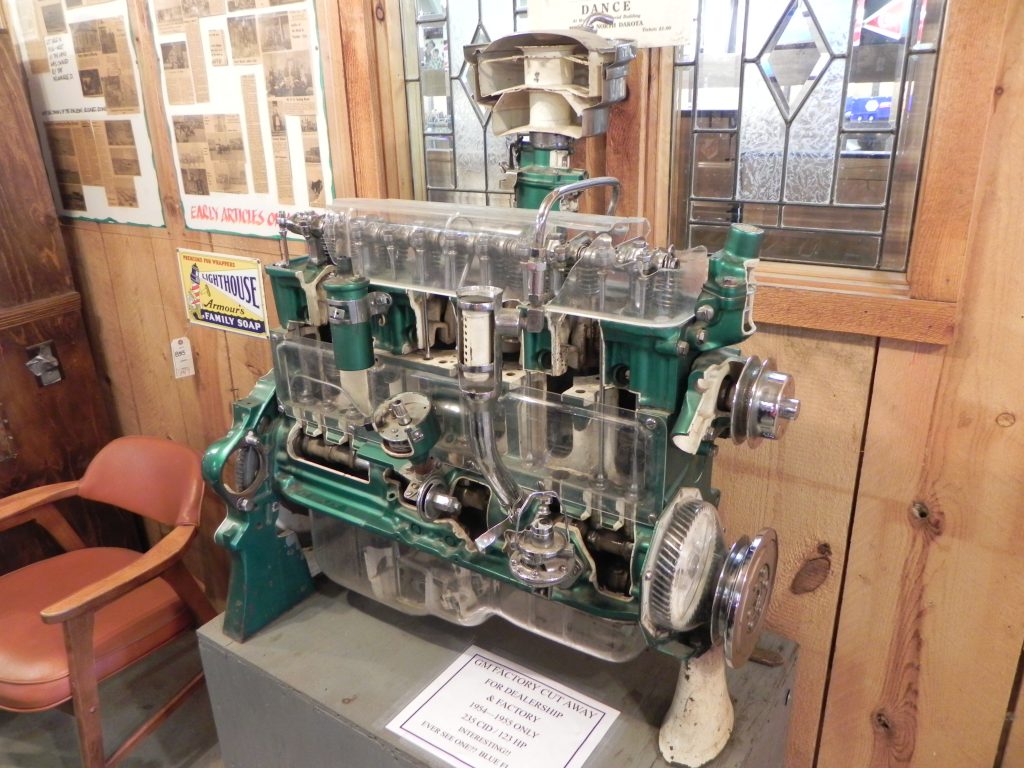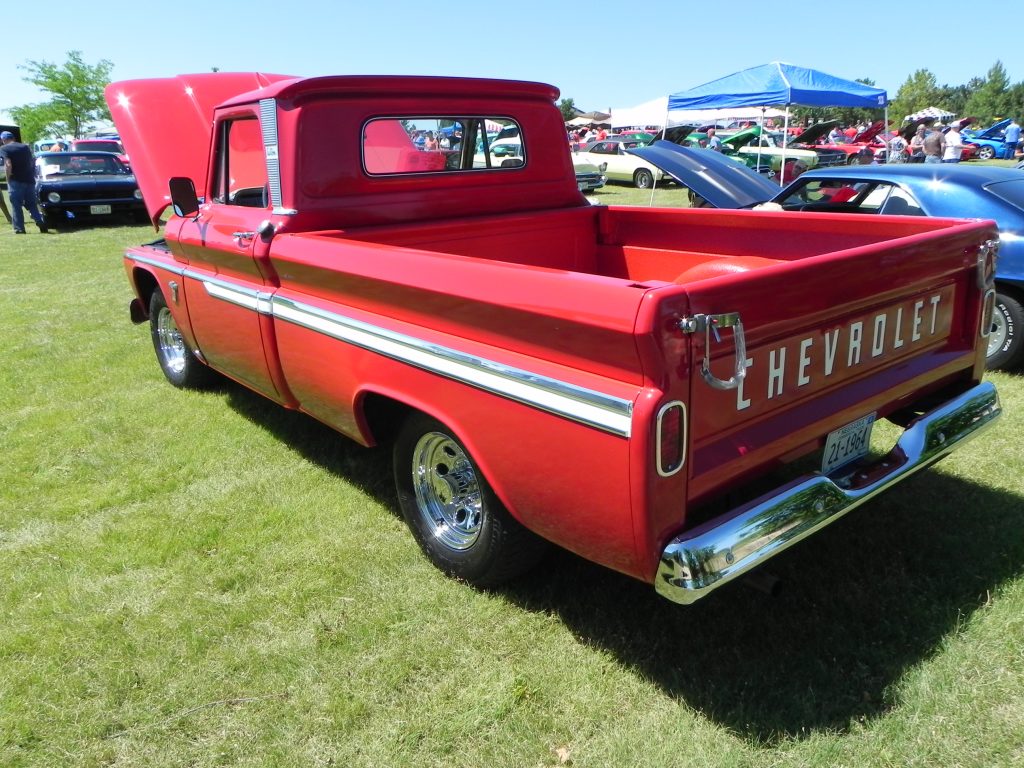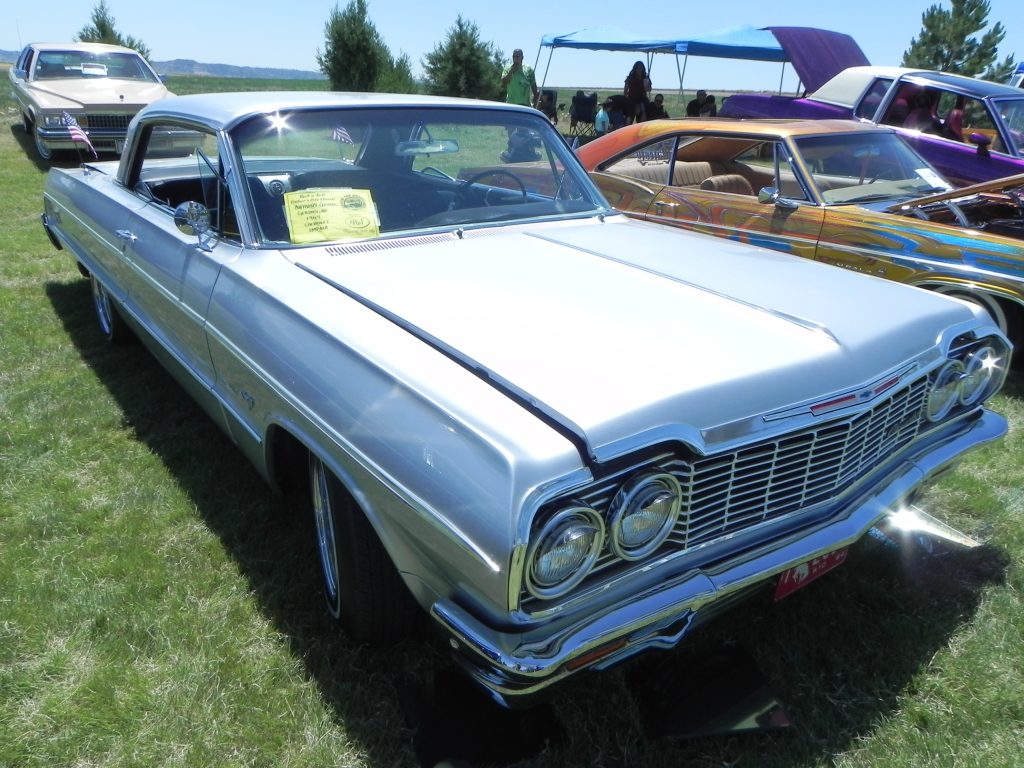In 1929, Chevrolet introduced a new inline six-cylinder engine to replace the company’s capable four-cylinder foundation block. For the next 70 years, the “Otto” engine would be the building block for most of Chevrolet’s vehicles, including sedans, trucks, and more.
The inline six Otto went through three generations of development and was not fully replaced until fuel injection became common. Even then, the Otto had a fuel injected version in its last generation. It was finally replaced by the newer Atlas engine designs.
The Otto appeared in many much-loved vehicles through that timespan, including those from other brands. It was the engine featured in the Chevrolet Corvette, Camaro, Impala, and Malibu. It was also featured in pickup trucks and vans from both the Chevrolet and the GMC families. The Otto also came in the Pontiac Firebird, the Chevy Nova, the Chevelle, and the Holden HD and HR models. Many Buick and Oldsmobile models, such as the Skylark and Cutlass, also used the Otto as did many boats, small ships, some commuter buses, and even a few Jeep-branded and Studebaker vehicles.
The Chevrolet Otto inline six was one of the world’s most prolific and well-accepted engines in history and was the basis upon which many other competing engine designs were formed.

The Otto’s First Generation: Stovebolt
The first generation of the Otto was the only engine Chevrolet offered in most of its vehicles from that model year through to the engine’s second-generation in 1937. Billed as the “six for the price of a four,” the Otto came in three displacement sizes, starting at 181 cubic inches (3.0 liters), then 194 ci (3.2L), and 207 ci (3.4L). Its overhead valvetrain design was a relatively new advent in 1929, replacing the valve-in-head designs of the previous four-cylinder engine it was displacing at Chevrolet.
Known as the “Stovebolt” engine era for the Otto, the first-generation featured pressurized oil lubrication for the three main bearings and “splash” lubrication for the rod bearings. The engines were water-cooled and had three bearings on a forged-steel crankshaft. Pistons were cast iron. A balanced crankshaft was introduced shortly after the Otto’s introduction.
The 194 produced 50 horsepower (37 kW) from a 3.3125 inch (84.14mm) by 3.75 inch (95.25mm) bore and stroke. This engine was a staple in Chevrolet and GMC branded trucks in 1935 and 1936. Output increased to 60 hp (45 kW) in 1932 with a slightly higher compression ratio. The 194 Otto was used in all Chevrolet passenger cars from 1929-1933 and the “Standard” models for 1934.
The Otto 181 was not often used, appearing primarily as a smaller engine option for trucks with the Chevy and GMC brands in 1935 and 1936. With 3.0-liters of displacement, the 181 had a bore and stroke of 3.3125 by 3.5 inches (88.9mm) with the goal of producing slightly more torque than the 194.
The Otto 207 was far more common, introduced in 1934 and appearing in Chevrolet and GMC trucks and some cars from 1934-1936 including all “Master Deluxe” branded vehicles. Outputting 80 horsepower (60 kW), this engine had 3.3125 inches (84.1mm) of bore and 4 inches (101.6mm) of stroke.

The 2nd Generation Otto: Blue Flame
In 1937, the second-generation of the Otto inline six was introduced and continued to be the only in-house engine offered by Chevrolet until 1954. This generation of the engine is commonly called the “Blue Flame” and was used until 1963 when the third-generation of the Otto series came along.
The crankshaft in this new generation of the Otto sat on four bearings. The oil distribution system was completely revamped to include an “oil trough” built into the oil pan to squirt a stream of oil at the connecting rods, whose dippers subsequently lubricated the rod bearings. This change allowed clearances for oil to be maintained in the gap between the rod and connecting rod. This gave more leeway in crankshaft differences and improved overall reliability as a result. Some of these adaptations can be seen in the dealership cutaway we photographed at the Peterson Transportation Museum in South Dakota.
This new generation of the Otto came in three flavors, like its predecessor, each a successively larger displacement. The 216 cubic inch (3.5-liter), the 235 cu in (3.9L), and the 261 cubic inch (4.3L). These were overhead valve inline six-cylinder engines with a compression ratio of 6.5:1 to 7:1, depending on model year and size.
The 216 was a common workhorse in the Chevrolet lineup, being built with a 3.5-inch bore and 3.750 stroke (88.9mm x 95.25mm). Running at a 6.5:1 compression ratio, the Otto 216 output 85 horsepower (63 kW) until 1941 when a new cylinder head improved that to 90 hp (67 kW) and a compression improvement to 6.6:1 in 1941, which improved output to 92 hp (69 kW). The Otto 216 was used in both the United States and Britain by General Motors brands. Many believe that the Austin engines of the period were direct copies of the Chevrolet 216 inline six design.
The most common Otto engine of the second-generation is the 235, which was widely used throughout the Chevrolet and GMC lineups. Used in both large sedans and trucks, the 235 wasn’t introduced until 1941. The bore and stroke were given big boosts to improve power output, widening to 3.5625 inches and 3.9375 inches (90.49mm x 100.01mm) respectively. It should be noted that in cars, the 235 was not generally used until 1953 where it was found to be an excellent complement to the new Powerglide automatic transmission of that day. This is where the “Blue Flame” name originated for the engine, with outputs ranging from 123 to 136 horsepower (92 to 101 kW), depending on mated transmission. The “blue flame” referenced the “perfect combustion” the engine was supposed to achieve. Also of note is that the original 1953 Chevrolet Corvette used this engine.
The Otto 261 was introduced in 1954 with a 260.9 cubic inch displacement (4.3L) and was offered as an optional upgrade for some heavy-duty trucks in the Chevrolet line. Its larger piston bore of 3.75 inches (95.25mm) meant more working muscle at 150 horsepower (112 kW) with emphasis on torque delivery. A new V6 engine was offered alongside this inline six for heavy-duty trucks, starting in 1960, and that engine eventually replaced the slow-selling 261.

Third-Gen Otto Modernizes
When the third generation of the Otto was introduced in 1962, it was late in coming. It offered four displacement sizes through its career, but was generally seen as lagging behind the competition in many of its vehicle model uses. The major updates for this generation of the Otto included a lighter weight design and conformity to the new transmission bell housing standard used throughout General Motors from the mid-1950s forward. Engine displacement matched the bore sizes of the first small-block eight-cylinder engines that began to gain popularity in Chevrolet models during this period. That commonality was purposeful, as Chevrolet sold both its small block V8s and the Otto series to outside buyers regularly for various applications including marine and military.
Displacement sizes for the Otto’s third generation started at 194 cubic inches (3.2 liters) and ran through 230 ci (3.8L), 250 ci (4.1L), to 292 cubes (4.8L). Bore sizes were 3.563 inches (90.5mm) and 3.875 inches (98.4mm) with strokes ranging from 3.25 inches (82.6mm) to 3.53 inches (89.7mm), and 4.12 inches (104.6mm).
Although this marked the third generation of the Otto engines and its entrance as one of the longest-lived engine designs in automotive history, Chevrolet learned from Ford’s mistakes and did not sit on its laurels when it came to innovation and market awareness.
A major difference in the third-generation Otto sixes was in the crankshaft. Specifically its bearings, which increased from four to seven for the third-generation of the engine. This meant better balance and a longer engine life with fewer problems. Sidestepping a major complaint of many Ford buyers who were tired of the “mechanic’s cars” Ford was seen to be producing at the time. In addition to this, the combustion chamber became a wedge design rather than a purely round cylinder, which improved combustion and economy. Other changes were to accessories for the engine, including stamped-steel pulleys for better balance.
Going along with this, Chevrolet was producing two types of Otto design, one a “short deck” offering used in light vehicles such as passenger cars and vans and a “tall deck” version used in trucks and commercial vehicles. The former took on the dimensions of the newer Chevrolet designs and V8 blocks while the latter took on the dimensions of the previous-generation Otto in order to bolt-in with older vehicles and newer bigger vehicle design parameters.
The Otto 194 (3.2-liter) was used mainly in pickup trucks and as a base engine in some vehicles like the Chevelle and some Studebaker offerings. Some Holden-branded vehicles also used this engine.
The 215 Otto was used exclusively by Pontiac as a smaller bore version of the 230.
The Otto 230 was a very proliferate engine, with a 140 horsepower (100 kW) output. This engine was used as the base offering throughout the General Motors offerings worldwide, including in the Chevrolet 3800, the Chevelle, the Malibu, the El Camino, the Nova, the Camaro, and more. This engine saw long life in South America where it powered vehicles into the 1980s.

The Otto 250 had a 155 hp (116 kW) output and was used in many Buick, Chevrolet, Oldsmobile, and Pontiac vehicles with sport and performance focus. This included the Pontiac Firebird and Chevrolet 400 Rally Sport models. Many South African, South American, and Checker-branded vehicles also used the Otto 250. Variants with the LD and LE names as well as a performance-oriented S version were also produced, each with different changes made to improve power and performance.
In the early 1960s, the Otto 292 was introduced as an inline six for GMC trucks and some large cars from Chevrolet. Several variants of the Otto were also made as GMC-only versions for various applications, usually by changing displacement slightly and with model number designations to match those changes.
The Otto series was eventually replaced by the Atlas series of engines. The combination of fuel injection, lighter materials, and better fluid exchange designs eventually caught up with the Otto and lead to its discontinuation. The final version of this series was used until 2002 in Brazil, where it was touted for its longevity when burning sugar cane-based ethanol, which is common in that country.






